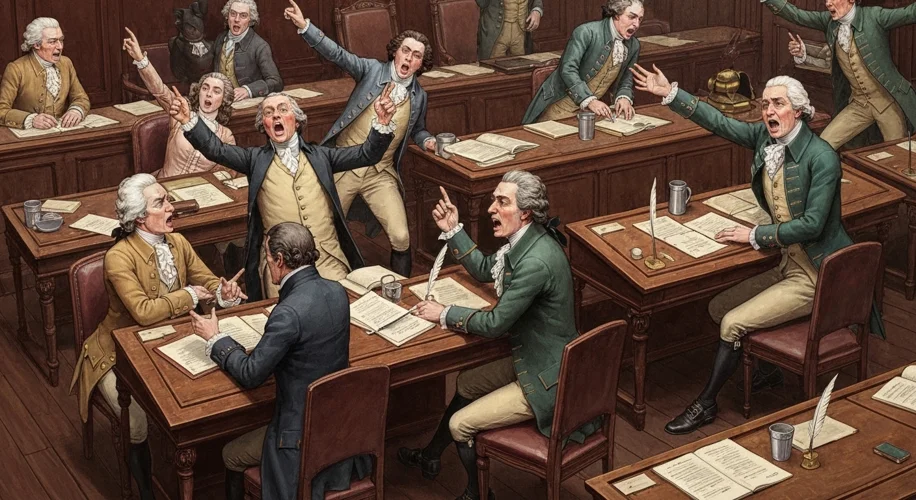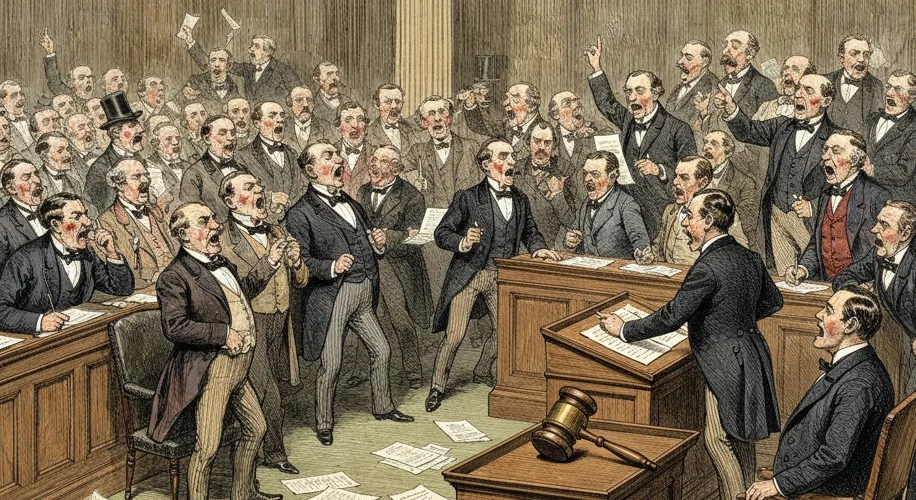The United States House of Representatives, often called the “people’s house,” is a place where the will of the nation is meant to be forged through debate and compromise. But behind the dignified proceedings lies a fascinating, and sometimes turbulent, history of rules, procedures, and even outright defiance.
From its inception in 1789, the House has grappled with how to manage a growing and increasingly diverse body of lawmakers. The early days were marked by a raucous energy. Imagine the scene: 65 representatives, many of them fresh from the battlefield or the legal profession, crammed into a relatively small room. Debates could be passionate, sometimes descending into shouting matches. Rules were, at best, rudimentary, and the Speaker’s gavel was often an overworked tool.
One of the earliest significant procedural shifts came with the adoption of written rules. This was a crucial step in bringing order to the chaos. The “Rules of the House” have evolved over centuries, reflecting changing political climates and the need to manage an ever-larger chamber. The power of committees grew, providing specialized spaces for legislation to be drafted and debated. The role of party leadership also became more pronounced, shaping the legislative agenda and the flow of bills.

But it wasn’t always about smooth sailing. The history of the House is punctuated by moments when procedures were deliberately used as tools of protest or obstruction. One of the most dramatic examples is the use of the filibuster, though it is more commonly associated with the Senate. In the House, however, tactics akin to the filibuster have emerged, particularly in instances where a minority party felt its voice was being drowned out or its concerns ignored.
Consider the late 19th and early 20th centuries, a period of intense industrialization and social change. Grievances, whether over economic policy or civil rights, often found expression on the House floor. Legislators might engage in extended speeches, deliberately drawing out debate to prevent a vote on a bill they opposed. This could lead to legislative lock-ins, where the House was effectively paralyzed until a compromise was reached or the session ended.
One notable instance, though perhaps not a full filibuster in the modern sense, involved the fight over the rules themselves. In 1811, a dispute over the seating of a congressman from Vermont led to a protracted period where the House couldn’t even establish a quorum to elect a Speaker. This highlights how procedural disputes could, and still can, bring the legislative process to a standstill. The very rules designed to facilitate governance could, in the wrong hands or in times of deep division, become instruments of deadlock.
More recently, the House has seen instances where members have utilized rules and procedures to stage dramatic protests. Think of sit-ins or hunger strikes on the House floor, not necessarily to delay a vote, but to draw national attention to a cause. These actions, while outside the traditional parliamentary playbook, are a testament to the enduring power of the legislative chamber as a stage for political expression.
The consequences of these procedural maneuvers are significant. When a minority successfully obstructs legislation, it can either prevent potentially harmful laws from being enacted or deny the majority a victory, fueling political polarization. Conversely, the threat of such obstruction can force greater negotiation and consensus-building. The rules of the House, therefore, are not merely bureaucratic technicalities; they are the very sinews of legislative power, capable of both enabling and impeding the democratic process.
Understanding the history of House procedures offers a crucial lens through which to view contemporary political battles. The echoes of past debates, the strategic use of parliamentary tools, and the recurring tension between majority rule and minority rights continue to shape the way laws are made in the United States. It’s a dynamic and often contentious story, a vital chapter in the ongoing experiment of American self-governance.

